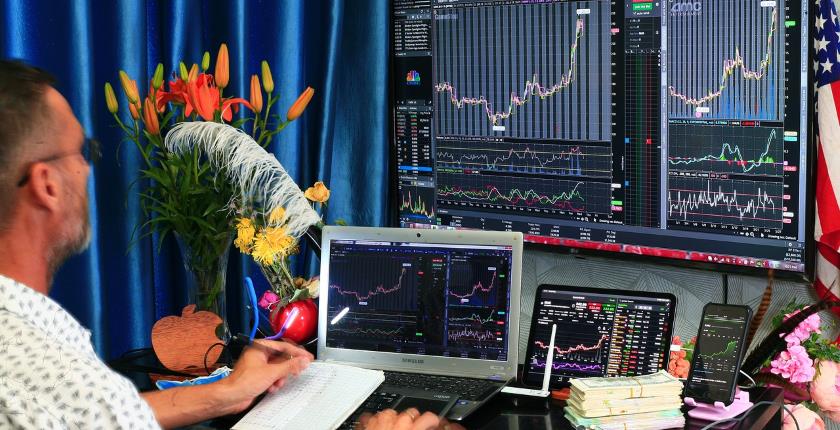
Photo: Sergei Tokmakov Terms.Law from Pixabay
The energy crisis is fueling the rapid rise in prices of electricity and gas to unseen highs, which in turn makes most products including food more expensive to make. Consumers throughout the world are facing a steep drop in the value of their money, prompting concerns inflation could spiral out of control.
The disruptions in the global supply chains and the slowdown in business investment since the beginning of the coronavirus pandemic have prompted price increases on several fronts this year. A jump in demand for products and services with the reopening of economies from lockdowns caught energy producers particularly unprepared.
The shock was initially felt the most in the gas sector as it is struggling to meet demand, which was strengthened by government support measures to mitigate the impact of COVID-19. Market forces took energy prices to unseen levels and the crisis is gripping industry by industry, increasing concern that inflation could get out of hand.
It is tricky when there is sentiment among consumers and businesses that price growth is accelerating. Inflation can be a self-fulfilling prophecy.
Chain reaction
Growth in costs weakens purchasing power and affects sales, so producers and service providers can be forced to slash investment, output and payrolls, which further worsens economic parameters. Moreover, energy shortages in China and India have been hampering industrial production for several months.
The rise in energy prices impacted the production of commodities and food
Energy prices are expected to remain elevated in 2022, adding to global inflationary pressures and potentially shifting economic growth to energy-exporting countries from energy-importing ones, the World Bank warns.
High natural gas and coal prices are impacting the production of other commodities and pose an upside risk to price forecasts, said John Baffes, Senior Economist in the World Bank’s Prospects Group. “Fertilizer production has been curtailed by higher natural gas and coal prices, and higher fertilizer prices have been pushing up input costs for key food crops. The production of some metals such as aluminum and zinc has been reduced due to high energy costs as well.”
No letdown at least until spring
The International Monetary Fund said “an unprecedented combination of factors” including the weather sparked the energy crisis. It pointed out that the outlook for inflation and the global economy was already uncertain. The IMF estimates energy prices would “revert to more normal levels early next year” but that otherwise they would pressure global growth.
If energy prices don’t retreat next year closer to earlier levels, it would pressure global economic growth, IMF says
Analytics firm GlobalData estimated global inflation would reach 3.2% this year, compared to 3% from its projection from June, and the 2.5% rate for 2020. It highlighted the soaring costs of raw materials for manufacturers in China amid a drop in coal output.
“Global economies are facing a perfect storm ahead of a cold winter, rising energy prices and a spike in commodity prices. In the short term, such a trend might deter consumer spending and impact post-pandemic recovery,” the report adds.
Consumer price growth breaking records
The United States Federal Reserve acknowledged this week that inflation is expected to run above the target 2% “for some time.” The so-called personal consumption expenditure index, the central bank’s preferred measure of price growth, jumped 4.4% in the year through September, against 4.2% in August. The reading was the highest in 30 years.
The Bank of England said it expects inflation in the United Kingdom to peak at 5% in April, which is much higher than what it projected in its quarterly report in August. The country’s central bank added the pace of the rise in consumer prices should “fall back materially” from the second half of next year but that it largely depends on energy.
In Germany, inflation accelerated for the fourth month in a row in October, reaching 4.5%, according to a preliminary statistical report. The level is the highest in 28 years, mostly due to an 18.6% spike in energy prices.
Spillover to food
The global Food Price Index, calculated by the Food and Agriculture Organization (FAO) of the United Nations, jumped 3% in October to its highest point in more than ten years. The rally is particularly driven by energy costs, but there was also a drop in production in some segments.
Global food prices are at their highest levels in more than ten years
The food market is generally more and more impacted by climate change, on top of a constantly growing demand by rising numbers of the population. Prices of vegetable oils surged 9.6% last month alone to a record.
The European Commission repeatedly argues there has been no distortion in prices of renewable energy. However, the costs of production of the equipment have been on a steady rise for more than half a year, together with climbing expenses for transportation, so it is likely it would gradually spill over to electricity from wind and solar farms.


















Be the first one to comment on this article.